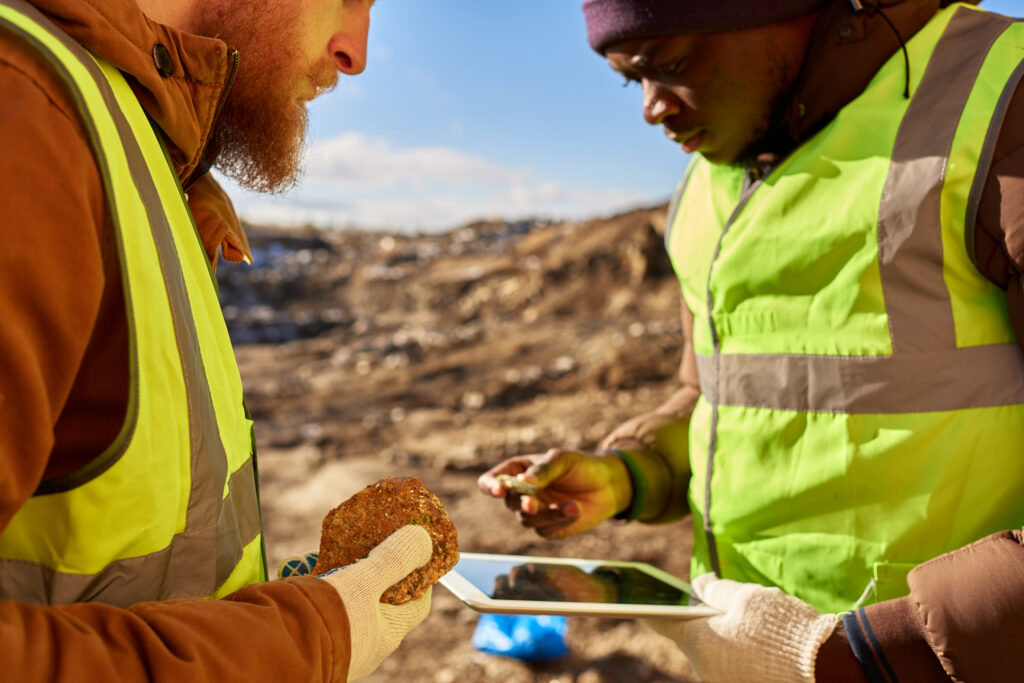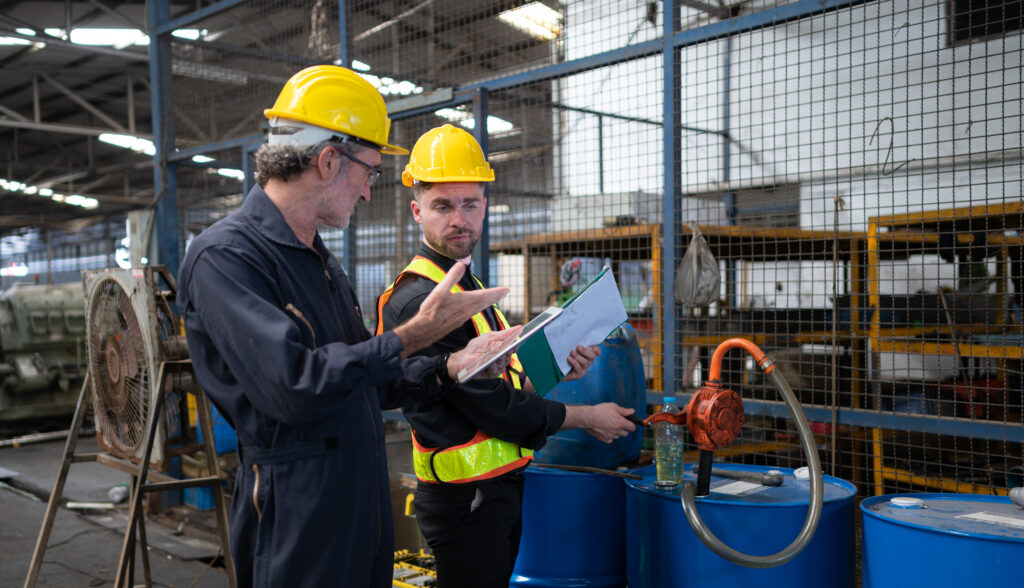High-risk industries such as oil and gas and industrial manufacturing operate within stringent regulatory frameworks and face unique challenges and risks requiring thorough scrutiny of equipment, processes, and facilities. A successful inspection in these industries requires a combination of meticulous
planning, adherence to standards, and effective communication. In this article, we will delve into the specific qualities defining a successful inspection in the context of oil and gas and industrial manufacturing, highlighting the critical elements contributing to safety, compliance, and operational excellence.
How to Prepare for an Inspection

1 – Prepare for Industry-Specific Challenges
The inspection team must be well-versed in the industry-specific challenges, safety protocols, and compliance requirements. This includes understanding the intricacies of equipment such as pressure vessels, pipelines, and machinery used in manufacturing processes. Prior knowledge of the unique hazards associated with these industries is essential for developing a comprehensive inspection plan.
2 – Set Clear Objectives
Setting clear objectives is a fundamental step in conducting a successful inspection and avoiding the pitfalls of inspection processes. Objectives should align with industry standards, regulatory requirements, and organizational goals. These objectives serve as a roadmap for the inspection team, guiding their efforts toward specific outcomes. Whether the focus is on ensuring equipment integrity, environmental compliance, or workplace safety, objectives should be SMART—Specific, Measurable, Achievable, Relevant, and Time-bound.
3 – Compliance with Industry Regulations
The oil and gas and industrial manufacturing sectors are subject to many regulations to ensure safety, environmental responsibility, and operational integrity. A successful inspection identifies and addresses non-compliance with these regulations. This includes adherence to standards such as API (American Petroleum Institute), ASME (American Society of Mechanical Engineers), OSHA (Occupational Safety and Health Administration), and other relevant industry-specific guidelines.
4 – Attention to Detail in Equipment Inspection
Equipment integrity is paramount in the oil and gas and industrial manufacturing sectors. Inspectors must pay meticulous attention to detail when examining equipment, identifying potential weaknesses or defects that could compromise safety and operational efficiency. This includes the inspection of pressure vessels, pipelines, valves, and other critical components. Non-destructive testing (NDT) techniques, such as ultrasonic testing and radiography, may be employed to ensure a thorough assessment of equipment integrity.
5 – Systematic Approach to Facility Inspection
Industrial facilities in the oil and gas and manufacturing sectors are vast and complex. A successful inspection requires a systematic approach to cover all relevant areas. This involves developing a structured checklist tailored to the specific facility, encompassing process safety, electrical systems, fire prevention measures, and emergency response preparedness. The systematic approach ensures you don’t overlook any critical element during inspection.
6 – Effective Communication with Stakeholders
Effective communication is a linchpin in the success of an inspection, particularly in industries where collaboration among various stakeholders is crucial. Inspectors must communicate their findings, recommendations, and any identified issues clearly and concisely to

facility managers, maintenance teams, and regulatory authorities. This transparency fosters a collaborative environment and ensures you implement corrective actions.
7 – Collaboration and Teamwork Among Inspectors
Engineers, safety professionals, and environmental experts may collaborate to conduct a comprehensive assessment. Successful teamwork is built on effective communication, mutual respect, and leveraging the diverse expertise within the inspection team. This collaborative approach enhances the thoroughness of the inspection and facilitates a holistic evaluation of the facility.

8 – Flexibility and Adaptability to Industry Dynamics
Inspectors must be flexible and adaptable to unforeseen challenges or changes during the inspection. This may involve adjusting the inspection plan, incorporating new technologies, or addressing emerging risks promptly. Flexibility is key to ensuring that the inspection remains relevant and effective in the face of industry dynamics.
9 – Be Impartial and Objective
Inspectors must approach their tasks without biases, relying on facts, data, and evidence to form assessments.
This objectivity ensures that inspections are fair and unbiased, contributing to the credibility of the findings and recommendations provided to stakeholders.
10 – Timely Reporting for Swift Corrective Actions
A successful inspection is not complete without a timely and comprehensive report. The inspection report is a crucial document detailing findings, recommendations, and corrective actions. In the oil and gas and industrial manufacturing sectors, prompt reporting is essential for addressing identified issues swiftly, minimizing potential risks, and maintaining operational continuity. The report should be detailed enough to guide corrective actions and future preventive measures.
11 – Follow-up and Continuous Improvement
After a report is issued, following up on recommended actions is also diligent to ensure your team implements corrective measures within stipulated timelines. Additionally, it provides an opportunity for continuous improvement, allowing organizations to learn from inspection findings and enhance their safety and operational protocols.
Why Choose FAT FINGER for Your Inspections
As organizations strive for continuous improvement in their inspection processes, leveraging advanced technologies like FAT FINGER becomes paramount.
FAT FINGER will streamline your inspections in following ways:
Digital Transformation: Embrace digital transformation by transitioning from traditional paper-based inspections to an intuitive, user-friendly digital platform. FAT FINGER enables seamless data entry and eliminates the challenges associated with manual paperwork, reducing the risk of errors and improving overall efficiency.
Customizable Inspection Checklists: Build inspection checklists in FAT FINGER or import preexisting inspection documents.
Real-Time Collaboration: Allow your teams to communicate findings and issues instantly, enabling swift decision-making and prompt corrective actions.
Enhanced Reporting: Generate comprehensive and professional inspection reports effortlessly.



